Stable Diffusion camera prompts are like a special trick that lets you use the same cool stuff photographers do to make pictures look awesome.
And guess what? You don’t even need a camera for it!
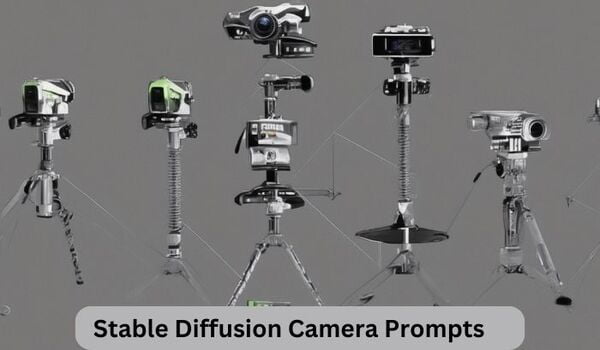
You can do it with good stable diffusion prompts, just as I have been doing for 14 months.
So, let’s dive into how camera angles, distance, lighting, and more can be strategically used to generate images that surpass your expectations.
Stable Diffusion Camera Angles
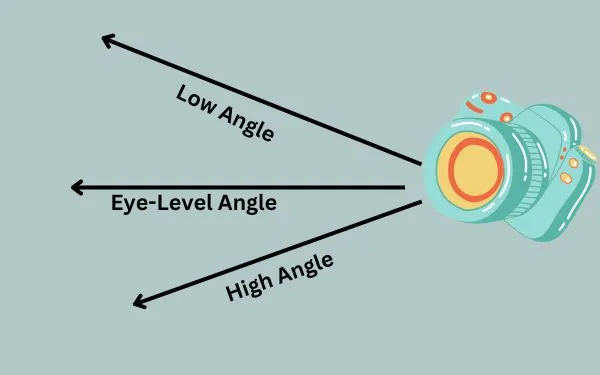
Have you ever noticed how a picture can look completely different depending on how it’s taken?
That’s because of something called camera angles and you may say they’re like the secret sauce that can make your images look amazing.
First things first, so let’s get familiar with some camera angle lingo. There are four main types to know about:
High Angle: This is when the camera is above the subject, looking down. It makes things look smaller.
For example, if you want to make a building look shorter, you’d use a high angle.
Eye-Level Angle: It’s a neutral perspective and how we usually see things in real life.
You should apply it when the camera is at the same height as the subject.
Low Angle: If you want things to look bigger or more imposing, using a low angle can make a person or object seem really tall and powerful.
And in this case, the camera is below the subject, looking up.
Bird’s Eye View: This angle is taken from directly above the subject. It provides a unique perspective and is often used to show an entire scene or layout.
Now let’s see how we can apply these perspectives in our prompts to generate images.
Stable Diffusion Camera Angle Prompts
For a comprehensive understanding let me first consider a serene lake scene.
Now, let’s apply different camera angles to enhance this prompt:
High Angle Prompt:
“A serene lake scene from a high angle, looking down to highlight the calm waters and the surrounding landscape.”
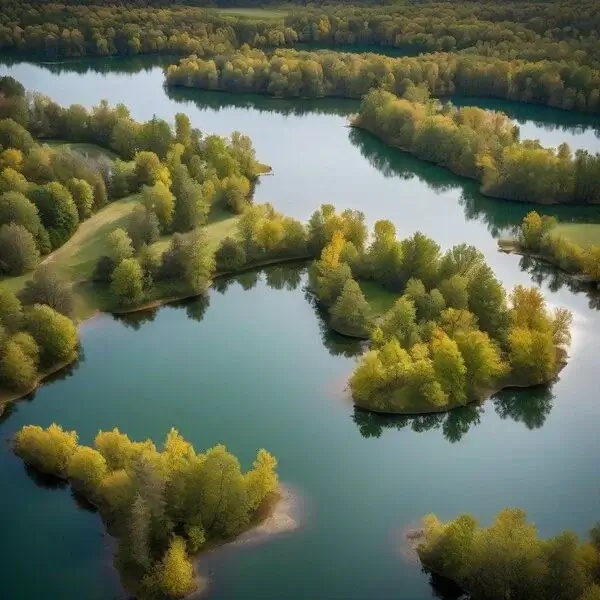
Note, it is like a drone shot that actually represents a high-angle shot.
Eye-Level Angle Prompt:
“A shot at eye level to provide a natural and immersive view of a tranquil lake, a genuine waterfront experience.”
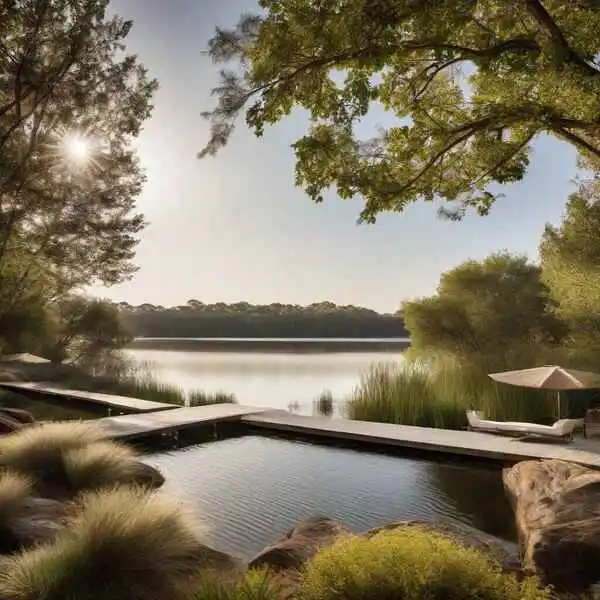
Have you noticed the magic of the camera prompt?
The image presents how someone observes the beauty of the tranquil lake.
Low Angle Prompt:
“A serene lake scene from a low angle, looking up, to emphasize the grandeur of the landscape and the towering trees.”

If you notice, it is clear that the image is shot from a low angle, mainly focusing on the blue sky through the branches of trees.
Bird’s Eye View Prompt:
“A bird’s eye view of a lake scene, capturing it from directly above to showcase the entire expanse of the water and its surroundings.”

It is like a bird was flying and observing the lake carefully, and finally, captured a moment of its view.
Now let’s dive into camera distances…
Stable Diffusion Camera Distance
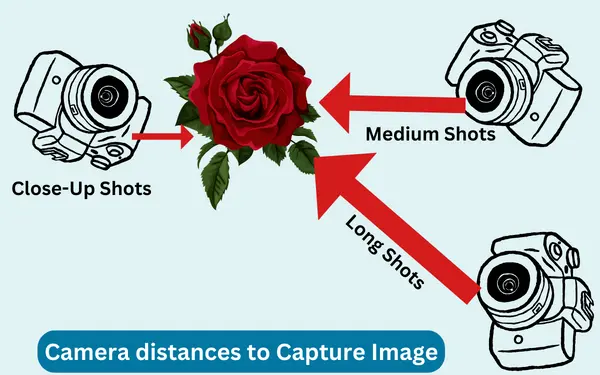
Camera distance refers to how far the camera is from the subject being photographed.
Here we’ll explore how you can leverage camera distance in your prompts to achieve the perfect shot.
Close-Up Shots: In this shot, you know that the camera is positioned very near to the subject.
Actually, this allows for detailed capture of small elements of the object, highlighting textures, expressions, and intricate features.
Medium Shots: This distance offers a balanced view, where the subject is framed from the waist or chest up.
In short, it provides context while still keeping the subject’s features well-defined.
Long Shots: Also known as wide shots or establishing shots, this distance involves placing the camera at a considerable distance from the object.
That’s why it captures a broad view, showing the subject in its entirety within its environment.
Stable Diffusion Camera Distance Prompts
Now, let’s delve into how you can incorporate camera distance into your prompts for Stable diffusion.
For this let’s focus on a single prompt and improve it step by step adding Camera Distances.
Original Prompt: ” A mountain landscape.”
Close-Up Shot Prompt:
“A close-up shot of a mountain’s rugged peaks, emphasizing the texture and details.”
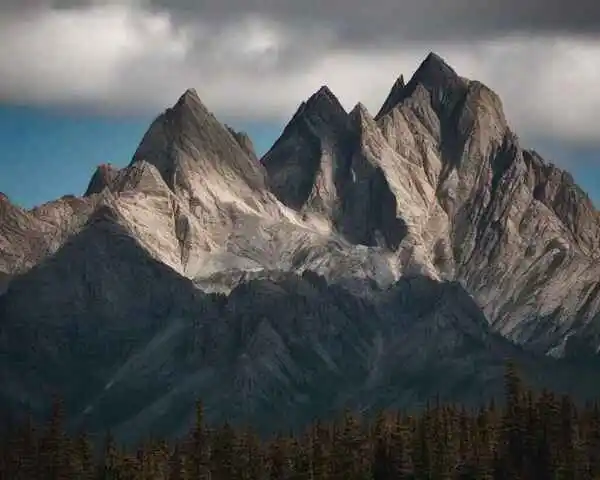
In this step, I’ve specified that we want a close-up shot of the mountain.
And you can see that it actually brings out the intricate details of the peaks, highlighting the textures and contours.
Medium Shot Prompt:
“A medium shot of the mountain range, framing it from the base to the towering summits.”
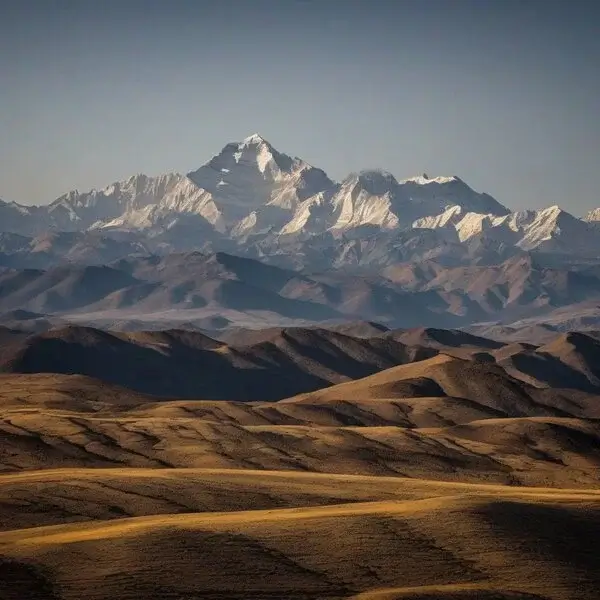
Now, I’ve adjusted the prompt to request a medium shot. This allows us to capture the entire mountain range, providing context and a sense of scale.
Long Shot Prompt:
“A long shot of the mountain landscape, showcasing the majestic expanse of the range against the horizon.”

Finally, I’ve incorporated a long shot into the prompt.
You can see by applying different camera distances, I’ve transformed a simple request into a series of prompts that vary in composition and perspective.
Best Stable Diffusion Camera Prompts:
As we just learned about angles and distances, I now create prompts based on them suitable for all the models of Stable diffusion like SDXL, v1.5, v2, and more.
After that, we will discuss camera lighting, shutter speed, and focal length.
Close-Up with High Angle Prompt:
A close-up shot of a delicate flower Rose from a high angle, showcasing its intricate petals.
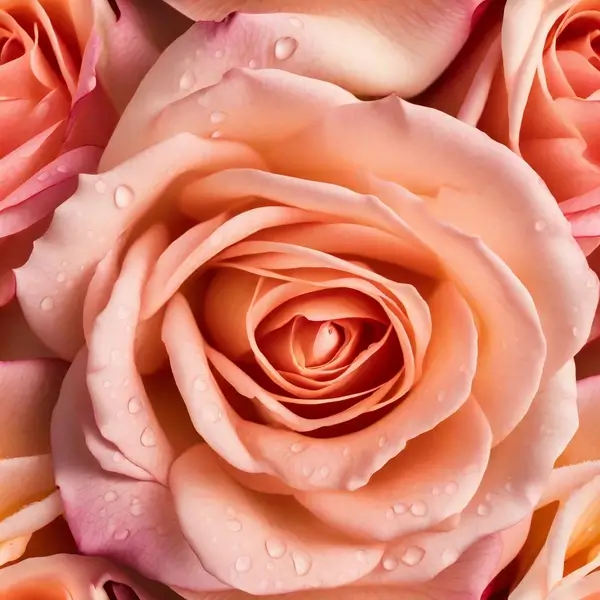
| Prompt Type | Prompt |
|---|---|
| Medium with Eye-Level Angle | A medium shot at eye level of a person by the window, capturing their contemplative expression. |
| Long with Low Angle | Long shot from a low angle, showcasing the towering skyscrapers against the city skyline. |
| Close-Up with Eye-Level Angle | Create a close-up shot at eye level of a painter’s palette, highlighting the vibrant colors and textures. |
| Medium with High Angle | Capture a medium shot from a high angle of a bustling marketplace, providing an overview of the activity. |
| Long with Eye-Level Angle | A long shot at eye level of a serene beach, capturing the waves lapping against the shore. |
| Close-Up with Low Angle | Close-up shot from a low angle of a majestic tree, emphasizing its towering presence. |
| Medium with Low Angle | Capture a medium shot from a low angle of an athlete in action, showcasing their strength and determination. |
| Long with High Angle | Long shot from a high angle of picturesque countryside, highlighting the rolling hills and fields. |
Now let’s explore the other elements of camera prompts.
Stable Diffusion Camera Lens:
Camera lens mainly focal length determines the field of view and it can be adjusted to capture wide scenes or zoom in on distant subjects.
Focal lengths are usually measured in millimeters (mm).
Wide-Angle Lens(e.g., 10-35mm):
Wide-angle lenses have short focal lengths and provide a broader field of view.
It makes them ideal for capturing expansive scenes or for close-up shots where you want to include a lot of the surroundings.
Prompt: “A simulated landscape image with a wide-angle lens set to 10mm focal length, showcasing a sweeping vista with foreground elements.”
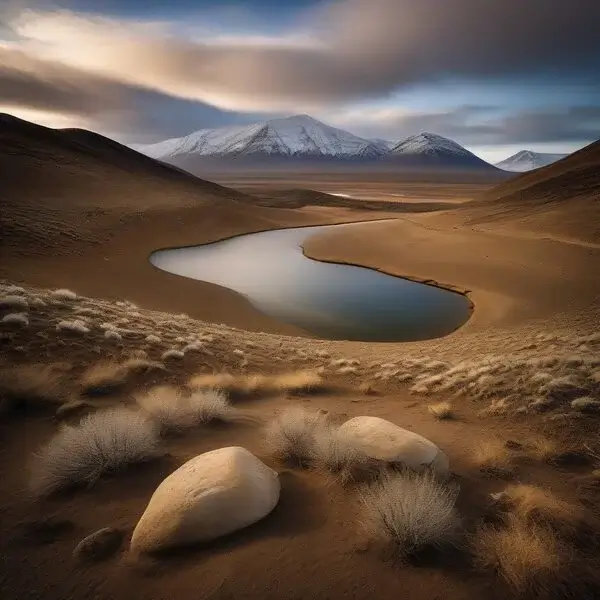
Standard / Normal Lens(e.g., 50mm):
A standard lens approximates the perspective of the human eye. They are versatile and suitable for a wide range of photography styles, including portraits and street photography.
Example Prompt: “A photography-style image of Broadway street in New York with a 50mm focal length.”
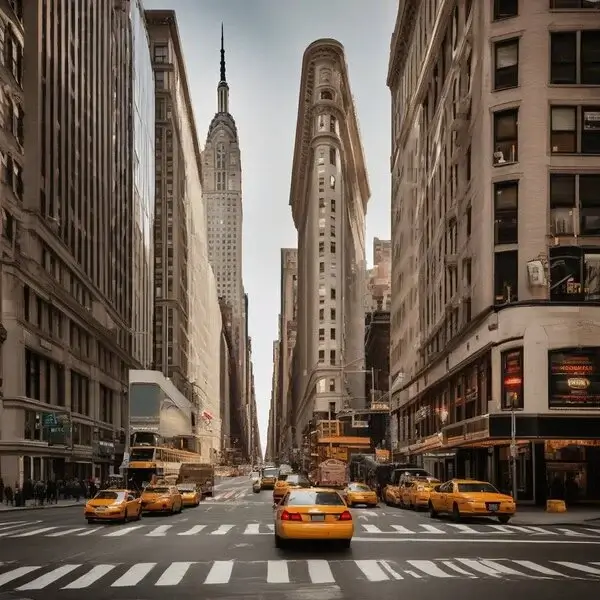
Telephoto Lens(e.g., 85mm and above):
Telephoto lenses have longer focal lengths, providing a narrow field of view and magnifying distant subjects.
They are popular for wildlife, sports, and portrait photography.
Example Prompt: “Image of a perched bird using a telephoto lens set to 200mm focal length, showcasing detailed feathers with normal background.”
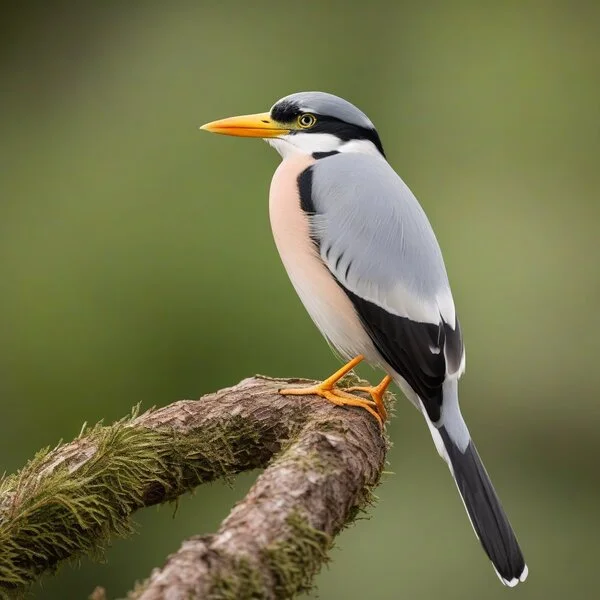
So, choosing the right focal length helps to convey your desired story or emotion in the photograph.
And allow you to control how viewers perceive and engage with the image.
Stable Diffusion Camera Lighting:
Stable Diffusion lighting in image generation is the arrangement and intensity of light sources used to illuminate a subject.
It plays a crucial role in setting the mood, highlighting details, and creating shadows in an image.
Natural Light:
We all know that Natural light comes from the sun or moon.
And it varies in intensity, color temperature, and direction depending on the time of day, weather conditions, and geographic location.
Example Prompt: “A portrait image of a lion, during the ‘golden hour’, warm, soft natural lighting to highlight the subject’s features.”

Artificial Light:
Artificial light is any light source not originating from natural sources.
This can include studio lights, flashes, and lamps. Photographers have control over the placement and intensity of artificial light.
Example Prompt: “A studio portrait of a lion with a single key light positioned at a 45-degree angle, casting soft, flattering shadows on the subject’s face.”

I know the images are cropped. Actually, here I focus only on lighting. If you notice, you can definitely see the magic of lights in the above two images.
If you need proper images, you can fix it by applying simple stable diffusion or SDXL negative prompts.
Camera Shutter Speed:
Shutter speed refers to the length of time the camera’s sensor or film is exposed to light. It controls the amount of motion blur and the exposure of an image.
Fast Shutter Speed(e.g., 1/1000s and faster):
Fast shutter speeds freeze motion, making them ideal for capturing fast-moving subjects or for situations where you want to eliminate blur.
Example Prompt: “High-speed action shot of horse riding, a fast shutter speed of 1/1000s, freezing a moving subject, sharp detail.”
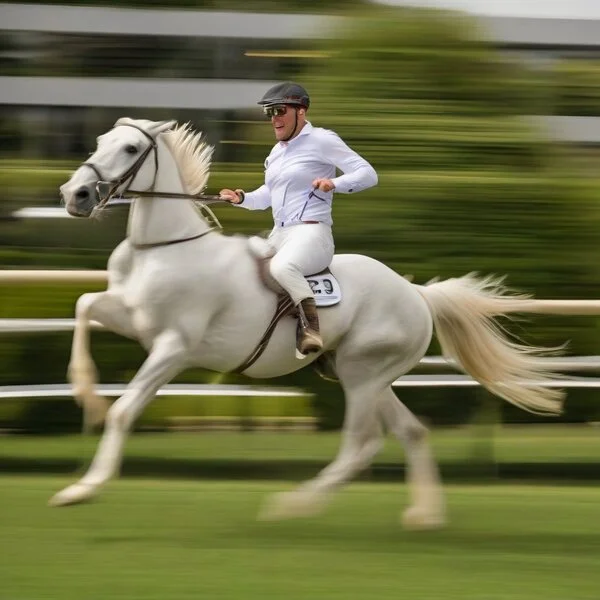
Slow Shutter Speed(e.g., 1/30s and slower):
Slow shutter speeds allow more time for light to reach the sensor, which can result in motion blur.
They are often used for creative effects, like capturing flowing water or light trails.
Example Prompt: “The motion of a flowing river in a forest setting. wide-angle lens, camera at a low angle, slower shutter speed, silky effect on the water.”
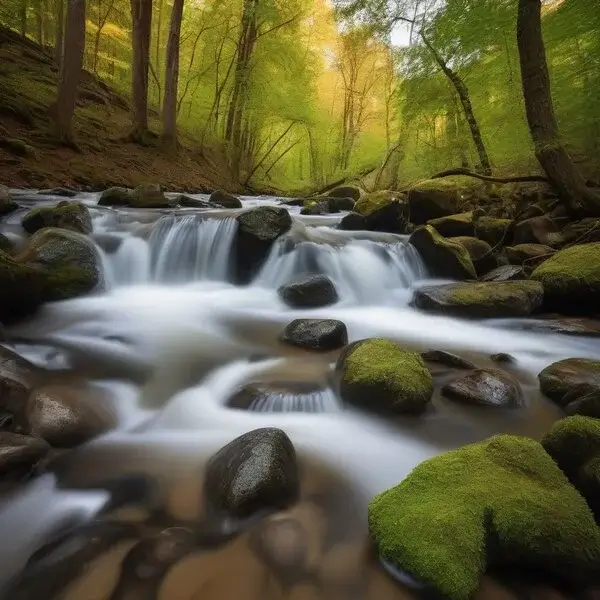
Now, as you know there are many cameras for photography, and the fun part is that if you include the types in your prompt, the generated image can be more impactful.
so, let’s see how…
How to Add Camera Types in Stable Diffusion Prompts
Here I’ll provide a generic example, and you need to adapt it based on your specific needs:
- Understand the Prompt Structure: First, familiarize yourself with the syntax and placeholders used in the stable diffusion prompts.
For more clarification check our post on Stable Diffusion prompt grammar.
- Define Your Prompt: To do this you may go with the best stable diffusion prompt templates.
It will save you time to think about the whole prompt.
For Instance: “An image using a [camera] of [scene].”
Now, let’s see how camera types impact a prompt:
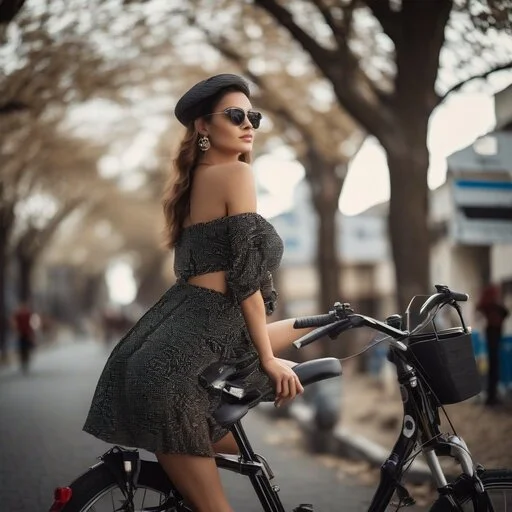
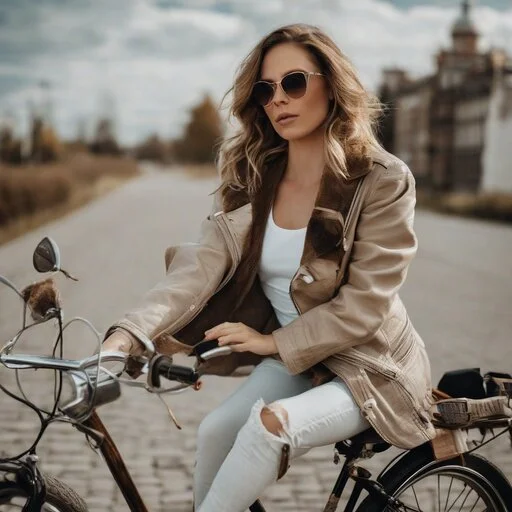
Sometimes it may not be necessary for you so try from your end and make it yours.
If you need to, you can use the following camera types in your prompt:
| Canon EOS 5D Mark IV | Panasonic Lumix GH5 | Leica Q2 |
| Nikon D850 | Canon EOS R5 | Fujifilm X-T3 |
| Sony Alpha a7 III | Nikon Z6 | Panasonic Lumix S1 |
| Fujifilm X-T4 | Sony A6400 | Sony Alpha a7R IV |
I hope these detailed explanations.
Now let’s move to the example prompts to kickstart your journey.
Stable Diffusion and SDXL Camera Prompts:
As we have already learned about all the aspects of camera prompts.
I am now going to create the best camera prompts suitable for SDXL and any other model of Stable Diffusion, using all the elements.

| No | Best Camera Prompts for all Stable Diffusion Models |
|---|---|
| 1. | Frame a cityscape at dusk from a high vantage point. wide-angle lens, entire skyline, slow shutter speed, light trails from passing cars. |
| 2. | Photograph a group of friends around a bonfire at night. medium telephoto lens, focus on their expressions, warm gel on the flash, enhance the glow of the fire. |
| 3. | Portrait of a musician on stage amidst a dynamic performance. fast shutter speed, freeze the subject in action, high ISO for a gritty, concert feel. |
| 4. | Close-up shot of a flower, golden hour, low angle, intricate details, aperture wide open, shallow depth of field. |
| 5. | Bustling market scene during the day. Normal lens, shoot from a slight distance to capture the overall atmosphere, natural light with a fill flash, highlight details. |
| 6. | Dramatic silhouette of a solitary figure against a vivid sunset. Position the subject on a hill, sun setting directly behind them. wide aperture, shallow depth of field. |
| 7. | image of a graceful flow of a waterfall, slow shutter speed (e.g., 1/30s), silky smooth water motion, static background. |
| 8. | Photograph a skateboarder executing a trick in an urban skatepark. Fisheye lens, unique perspective, fast shutter speed, freeze the action mid-air. |
| 9. | Panoramic landscape of a mountain range during the early morning. Wide-angle lens, vast scenery, tripod and a small aperture, maximum sharpness. |
| 10. | Candid street portrait of a person walking through a busy market. Prime lens, wide aperture, blurred background, natural light, reflector for subtle fill. |
| 11. | A nighttime cityscape from a rooftop bar. Telephoto lens, isolate specific buildings, slower shutter speed, sparkling lights of the city. |
| 12. | High-key portrait of a subject against a white backdrop. Use soft, diffused lighting, eliminate harsh shadows, shallow depth of field, emphasize the subject. |
| 13. | Macro shot of a raindrop on a leaf after a fresh downpour. Macro lens, narrow aperture, maximum sharpness, natural light with a reflector for soft highlights. |
| 14. | Frame a dynamic action shot of a soccer player in mid-air, taking a powerful shot on goal. Fast shutter speed to freeze the moment, wide-angle lens for a dramatic perspective. |
Tips: If you can use SDXL, you may use SDXL styles selector for a better image of your desired style.
Conclusion:
I hope these prompts will provide you with a wide range of opportunities to explore different aspects of photography, including angles, distances, lighting, focal lengths, and shutter speed.
If anything I have missed in this article, don’t hesitate to inform us by commenting below. Now, let’s start experimenting with the prompts and fulfill your needs.

Hi there! I’m Zaro, the passionate mind behind aienthusiastic.com. With a background in Electronics Science, I’ve had the privilege of delving deep into AI and ML. And this blog is my platform to share my enthusiasm with you.
